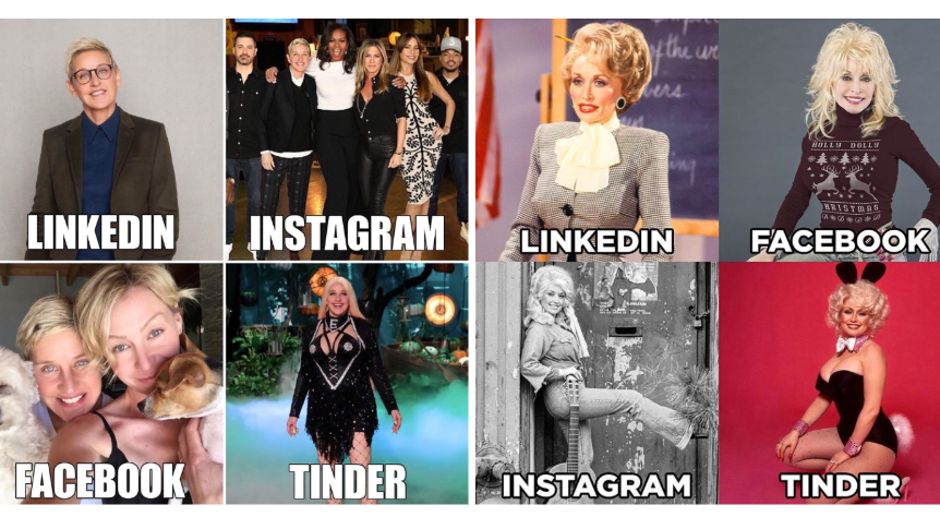
Whether you are writing a donor appeal, government tender, sponsorship proposal or a funding application, evidence of the need for the project you are raising funds for is critical to motivate your supporters to give to your organisation, over others they are receiving requests from.
In addition to connecting through emotive appeal, there has to be strong evidence that you are the best organisation to meet the need you want your prospective donors to support.
These memes doing the rounds on social media, encapsulate perfectly the different spin you can put on communications to different donor segments. Just like Dolly and Ellen’s “would be” profile pictures differ hugely between what they are looking for from each social media platform, we also need to adapt the same core content and present it in different ways across our different donor communication strategies.
As a communications expert – you have the power! You have to work with the relevant people in your organisation (and beyond) to extract and gather the best information to communicate your messages to your donors.
BUT! It is about getting the mix of heart and head correct depending on the TYPE of donor communications. We need to be sure we are answering the donor’s agenda. For example, a grant application is going to need a lot more stats and facts, demonstrable need and proof of how you are going to measure and report on outcomes and impact, compared to a donor appeal to your regular givers.
What do you do if that evidence base doesn’t exist? This signals time for a high- level discussion with your organisation’s leadership. There has never been a better time than NOW to ensure that your organisation has the appropriate monitoring and evaluation frameworks in place.
Some of the most common fails in effective major donor communications that we see include:
* Responses contain interesting information, but no substantiated evidence of the claims being made.
* The project need is not evident. Lack of data and references. And no clear definition of how it is different to what others are doing and the gap your work is filling.
* Project implementation plan has not been well thought out and is hard to understand.
* The budget does not make sense according to the project implementation plan.
* Outputs and outcomes are confused.
Needs data needs to be collected at three levels: organisational, sector and global.
1. Your organisation is the expert. What kinds of evidence do you have to draw on? Have you surveyed your supporters? Do you have:
* Documented observations from your staff
* Demand for your services (i.e. waiting lists for services / is demand outstripping your capacity to deliver?)
* Service / activity use or attendance statistics
* Evaluations of previous programs
* Beneficiary survey results
2. What does the sector say about the need for what you do?
* What do local council statistics say about the need you are addressing?
* How about peak bodies and government?
* If you sit on reference groups, what is the evidence they have?
3. What international data exists to back up how you know your proposed project will work?
* What are the similarities between what you want to do and what has been successful elsewhere?
* What do you need to adapt?
* Has impact data been collected elsewhere that you can base some assumed outcomes and impact on? Of course, with the appropriate M&E frameworks in place.
* Google is your best friend… but make sure your evidence base is credible!
To conclude, we need to ensure our supporters have a clear understanding and proof of why your organisation is the best to deliver the project for which you are seeking funding. Motivate your supporters with a strong evidence base and ensure that the right balance of heart and head is present, according to which supporter segment you are communicating with.

